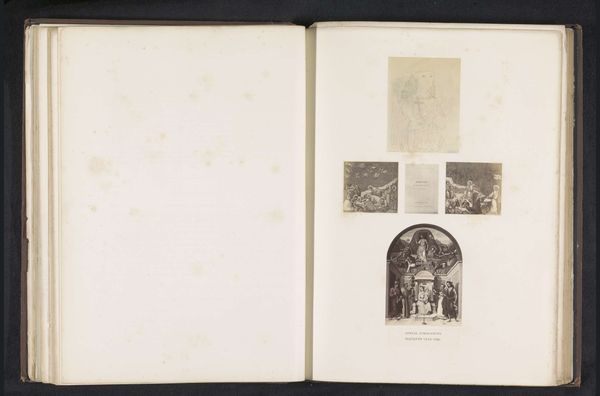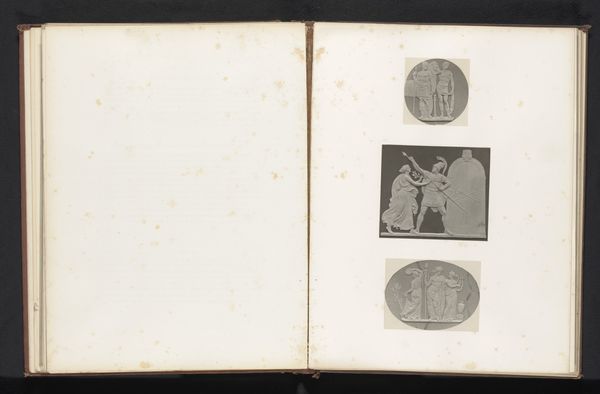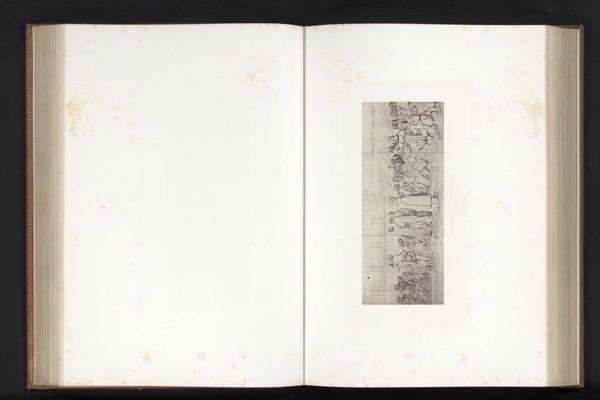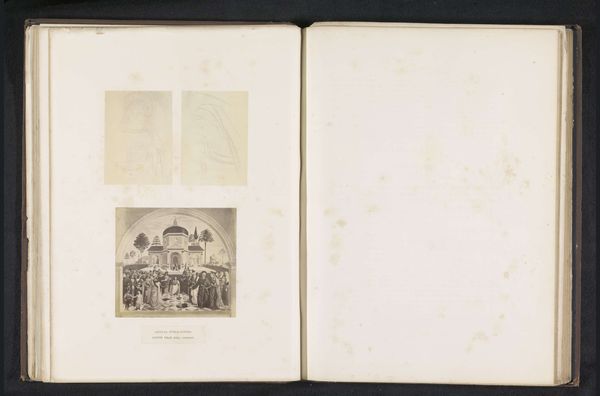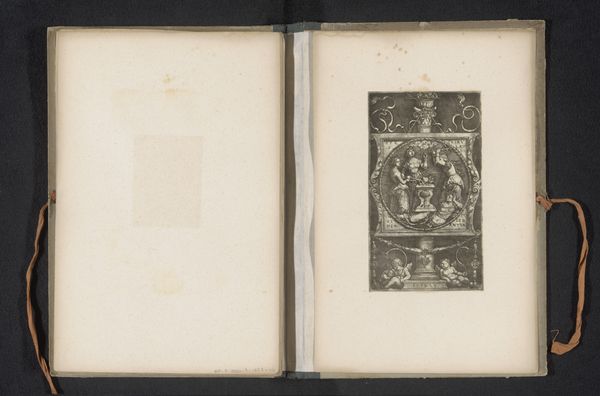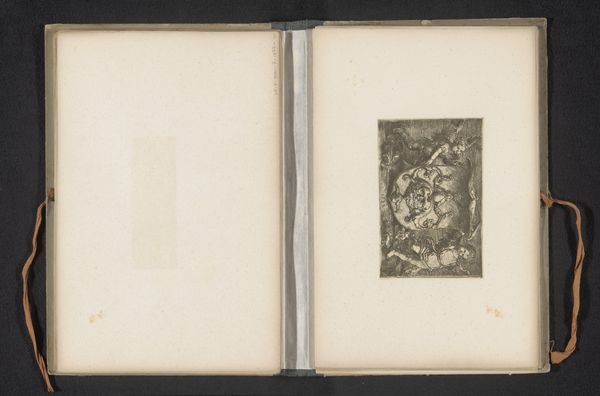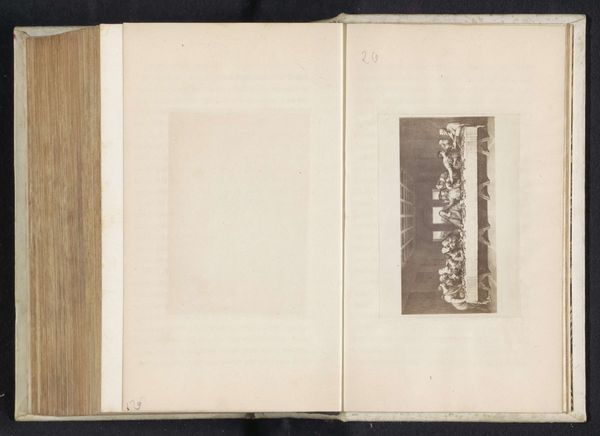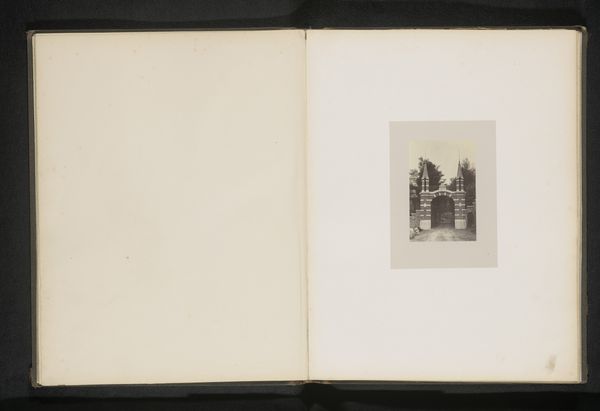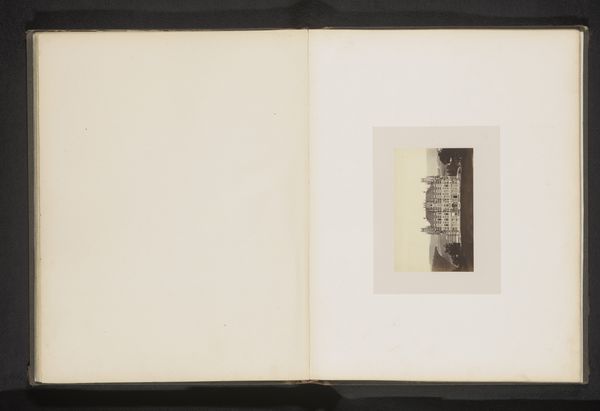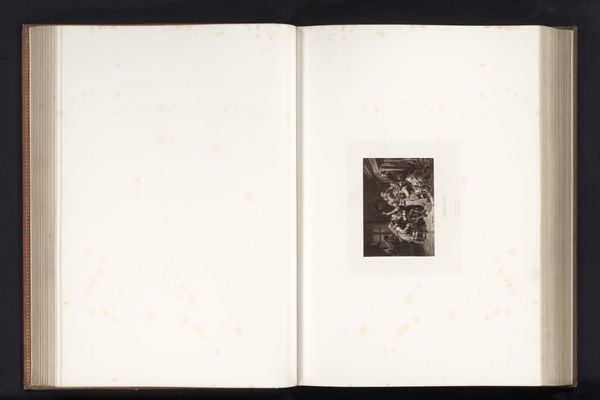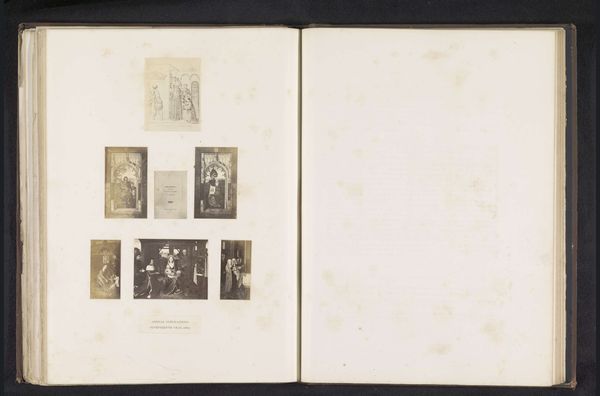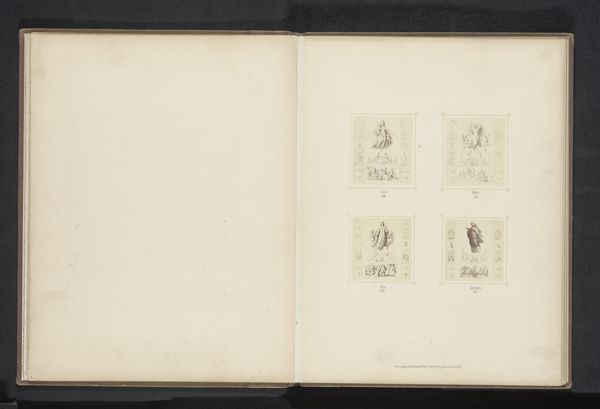
Zes fotoreproducties van een publicatie door de Arundel Society met prenten naar Giotto before 1869
0:00
0:00
print, paper, photography
# print
#
book
#
paper
#
photography
#
italian-renaissance
Dimensions: height 378 mm, width 290 mm
Copyright: Rijks Museum: Open Domain
Editor: We're looking at "Zes fotoreproducties van een publicatie door de Arundel Society met prenten naar Giotto," dating from before 1869. It appears to be a photograph of a book page featuring reproductions of Giotto's work. The images are small and quite faded, giving the page a melancholic, historical feel. What stands out to you when you examine this collection of reproductions? Curator: Well, I'm immediately drawn to the fascinating dialogue between reproduction and the aura of the original. Consider Giotto: his frescoes were revolutionary in their emotional naturalism, forging a new visual language. The Arundel Society aimed to disseminate art to a wider British audience, so how do these photographic prints, themselves copies, function as cultural memory triggers? Editor: So you're suggesting that these prints act almost as relics, reminding us of Giotto's innovations? Curator: Precisely. Think about the emotional power Giotto imbued in his figures, the symbolic weight of each gesture. Now, imagine how that gets filtered through the printing process, the photographic lens, and ultimately, our own perception. Does the emotional core survive? Editor: That’s a good point. I wonder, in its own way, the limitations of the photographic reproduction also carries a meaning and affect? Curator: Exactly! It also raises an interesting question about the perceived authority of images, doesn’t it? Even a diminished image can act as a placeholder for deeper cultural narratives. What about the book format itself - does that shape how we respond? Editor: Absolutely. Presenting them as part of a bound volume lends a certain academic weight. Seeing these reproductions organized this way is entirely different from encountering Giotto's actual frescoes. I think that’s an element I hadn't considered. Curator: Indeed, the visual symbol persists. Ultimately, the book’s existence bears its cultural weight.
Comments
No comments
Be the first to comment and join the conversation on the ultimate creative platform.

